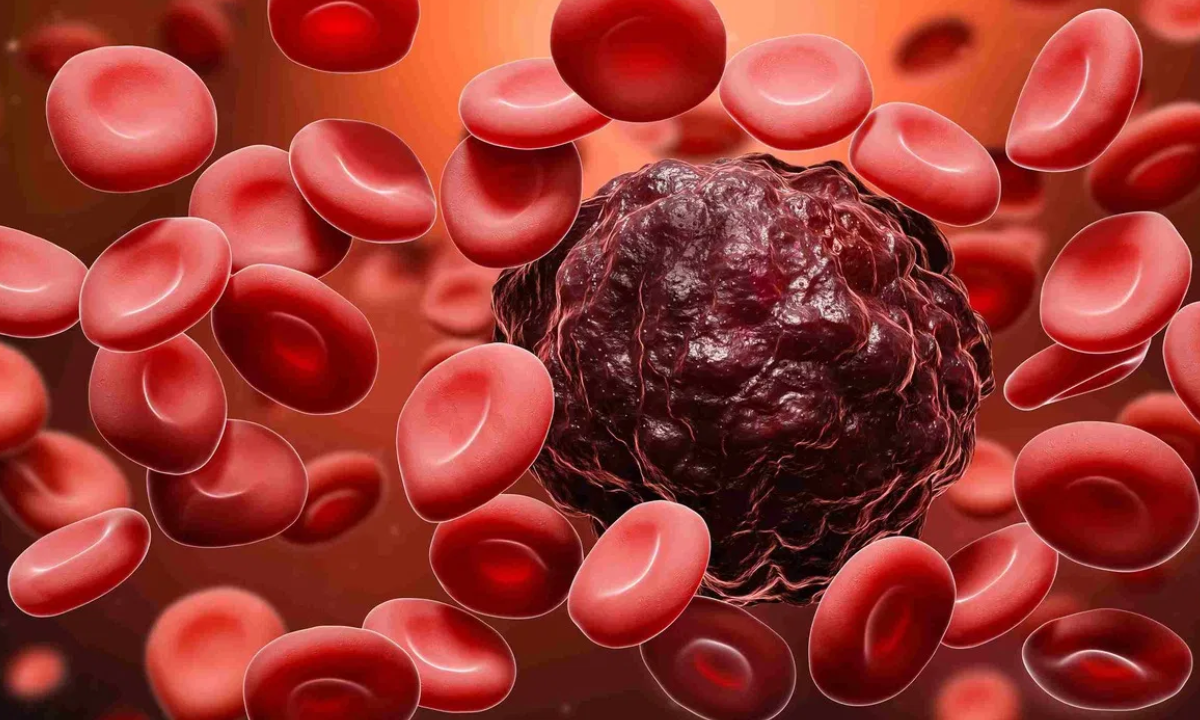
The realm of blood cancers, formally known as hematologic malignancies, is vast and often misunderstood, frequently being reduced to the singular term ‘leukemia’ in public discourse. In reality, this category encompasses a diverse group of diseases—including leukemia, lymphoma, and myeloma—all stemming from a malfunction in the production and function of blood cells within the bone marrow or the lymphatic system. Unlike solid tumor cancers that often present as a mass, these malignancies are systemic from their inception, circulating throughout the body and compromising the very components essential for life: red cells for oxygen, white cells for immunity, and platelets for clotting. The challenge for both patients and clinicians is the elusive nature of the early symptoms, which often mimic far more common, benign ailments like the flu or persistent fatigue, delaying a timely and critical diagnosis. Navigating this complexity requires a deep appreciation for the subtle, yet serious, ways these cancers manifest and a willingness to look beyond the superficial presentation.
The Subtle Warning Signs: Decoding Non-Specific Clinical Presentations
The initial signs of a blood cancer are rarely dramatic or distinctive, leading many individuals, and sometimes even medical professionals, to dismiss them as trivial or attribute them to overwork or stress. This is particularly true for chronic, slower-growing forms of leukemia or lymphoma, which can remain symptomatically silent for extended periods. However, a persistent pattern of non-resolving symptoms should raise suspicion, demanding a more detailed inquiry into the body’s fundamental functions.
…dismiss them as trivial or attribute them to overwork or stress.
The most common complaints are those directly tied to the compromised functions of the blood components. Persistent, unyielding fatigue that is not alleviated by rest, for instance, often signals anemia caused by a shortage of healthy red blood cells. Similarly, a noticeable increase in the frequency or severity of infections, coupled with fevers that recur without a clear source, suggests a failure in the production of functional white blood cells. The key difference between these symptoms and those of a routine viral illness is their duration, severity, and lack of correlation with typical recovery timelines, urging a systematic diagnostic approach rather than a wait-and-see strategy.
Compromised Coagulation: Unexplained Bruising and Bleeding Tendencies
The unregulated proliferation of cancerous cells within the bone marrow fundamentally compromises its capacity to produce sufficient numbers of healthy platelets, the tiny cell fragments responsible for initiating blood clotting. A deficiency in these clotting factors, a condition known as thrombocytopenia, often results in easily recognizable, yet frequently misattributed, physical signs on the skin.
A deficiency in these clotting factors…
Patients may notice unexplained bruising following minimal trauma or a tendency for minor cuts to bleed for an unusually long time. More characteristic signs include petechiae, which are tiny, pinpoint red or purple spots on the skin that do not fade when pressed, indicating minute bleeding under the surface. In more severe cases, nosebleeds or bleeding gums may become a recurring issue. While many benign conditions can cause bruising, the sudden onset or increasing severity of these hemorrhagic tendencies, especially when coupled with other systemic symptoms, is a strong indication that the body’s coagulation mechanism has been critically undermined by a hematologic process and requires immediate investigation.
The Lymphatic System Alert: Palpable Glands and Visceral Changes
For cancers like lymphoma, which primarily affect the lymphatic system, the initial symptoms often involve the physical enlargement of lymph tissues as they become sites of uncontrolled malignant cell accumulation. These swellings are often accessible to physical examination, providing a more tangible clue than the vague symptoms of fatigue or fever.
…the physical enlargement of lymph tissues as they become sites of uncontrolled malignant cell accumulation.
Patients may discover painless, persistent swelling in the lymph nodes of the neck, armpits, or groin. Critically, these masses often do not recede as they would following a normal infection. Furthermore, because lymph tissue is also concentrated in the spleen and liver, some blood cancers can cause these visceral organs to become enlarged, leading to a sensation of abdominal fullness, discomfort, or early satiety. These palpable or noticeable masses necessitate specific imaging and tissue sampling, as they represent areas of active malignancy and are often the first hard evidence pointing toward a diagnosis like Hodgkin or non-Hodgkin lymphoma.
The Initial Snapshot: Interpreting the Complete Blood Count
The diagnostic journey for most blood cancers begins with one of the most fundamental and informative laboratory tests: the Complete Blood Count (CBC) with a differential. This routine panel provides a snapshot of the quantity and relative proportions of the key cellular components circulating in the peripheral blood—red cells, white cells, and platelets. In a patient presenting with non-specific symptoms, this test is often the first to reveal a significant, pathological abnormality.
…interpreting the Complete Blood Count (CBC) with a differential.
The results can show abnormal levels of any of the cell lines: anemia (low red cells), thrombocytopenia (low platelets), or, most tellingly, an abnormal white blood cell count. In acute leukemias, the count is often dramatically elevated due to a surge in immature, non-functional cells (blasts), while in other chronic forms, the counts might be depressed or unusually normal, yet highly dysfunctional. The CBC is not definitive for cancer, but it acts as a highly sensitive initial alarm bell, confirming that the problem lies not just in the patient’s lifestyle, but in the core machinery of their hematopoietic system.
The Definitive View: Bone Marrow Aspiration and Biopsy
While the CBC suggests a problem, the bone marrow aspiration and biopsy is the gold standard procedure required to definitively diagnose and classify a blood cancer. Since the bone marrow is the factory where all blood cells are produced, an examination of its cellular population provides a direct view of the disease origin and extent.
…bone marrow aspiration and biopsy is the gold standard procedure required to definitively diagnose and classify a blood cancer.
This invasive, but necessary, procedure involves extracting a small sample of the liquid bone marrow (aspiration) and a piece of the solid bone tissue (biopsy), typically from the back of the hip bone (posterior iliac crest). Pathologists then examine these samples under a microscope to determine the percentage of malignant cells (blasts), their specific morphology, and how much the abnormal cells have crowded out the healthy, functioning cells. Crucially, the biopsy confirms the architectural integrity of the marrow and the extent of the disease, moving the diagnosis from suspicion to precise classification necessary for treatment planning.
Pinpointing the Subtype: The Role of Cytogenetics and Molecular Testing
The treatment of blood cancers is highly customized, and success often hinges on an accurate classification that extends beyond simple cell type (leukemia, lymphoma, myeloma). This precision is achieved through advanced laboratory techniques like cytogenetics and molecular testing, which scrutinize the genetic blueprint of the malignant cells.
…cytogenetics and molecular testing, which scrutinize the genetic blueprint of the malignant cells.
Cytogenetics examines the chromosomes of the cancer cells, searching for characteristic rearrangements, deletions, or additions—such as the Philadelphia chromosome (a specific translocation seen in Chronic Myeloid Leukemia). Molecular testing goes deeper, identifying specific DNA mutations or gene expressions that drive the cancer’s growth. These genetic markers are paramount because they not only dictate the disease’s prognosis (its likely course) but also identify whether the cancer is susceptible to highly specific targeted therapies, making the molecular fingerprint an essential guide for the oncologist.
First-Line Assault: The Foundations of Chemotherapy Protocols
For most aggressive blood cancers, particularly acute leukemias, the immediate cornerstone of treatment remains chemotherapy. This approach uses powerful chemical agents designed to target and destroy rapidly dividing cells, which is a hallmark of cancerous proliferation. However, unlike the general image of chemotherapy, modern protocols are intricate and highly phased.
…the immediate cornerstone of treatment remains chemotherapy.
The process is often divided into phases: an intensive induction phase, aimed at achieving a complete remission by wiping out most of the cancerous cells; a consolidation phase, which further lowers the residual disease burden; and sometimes a longer maintenance phase to prevent relapse. Chemotherapy regimens are rarely a single drug, typically involving complex combinations of cytotoxic agents administered over weeks or months, each designed to attack the cancer cells at different points in their life cycle. The inherent side effects, resulting from damage to healthy, rapidly dividing cells like hair follicles and gut lining, necessitate meticulous supportive care to manage infection and blood counts.
Targeted Therapy: Precision Strikes Against Molecular Vulnerabilities
A major evolution in the treatment of hematologic malignancies has been the emergence of targeted therapy, a personalized approach that represents a departure from the non-specific toxicity of traditional chemotherapy. These drugs work by selectively interfering with the specific molecular pathways or proteins that are essential for the cancer cell’s survival and growth, often identified through the aforementioned molecular testing.
…selectively interfering with the specific molecular pathways or proteins that are essential for the cancer cell’s survival and growth…
A prime example is the use of tyrosine kinase inhibitors (TKIs), which have revolutionized the treatment of Chronic Myeloid Leukemia (CML) by blocking the action of the abnormal protein produced by the Philadelphia chromosome. Unlike chemotherapy, these drugs generally spare healthy cells, leading to a more manageable side-effect profile and, for some patients, transforming a previously fatal disease into a chronic, manageable condition. Identifying the appropriate target is key, requiring that the cancer’s genetic makeup is analyzed as precisely as possible before treatment initiation.
Cellular Rescue: The Vital Role of Stem Cell Transplantation
For high-risk blood cancers or those that have relapsed after initial treatment, hematopoietic stem cell transplantation (HSCT)—often referred to as bone marrow transplantation—represents the most intensive and potentially curative treatment option. This procedure is essentially a cellular reset for the patient’s hematopoietic system.
…a cellular reset for the patient’s hematopoietic system.
The process involves delivering high-dose chemotherapy and sometimes radiation to completely eradicate the patient’s diseased bone marrow. This is followed by the intravenous infusion of healthy, blood-forming stem cells, either collected from a compatible donor (allogeneic transplant) or the patient themselves when the disease is in remission (autologous transplant). The goal is for these healthy stem cells to engraft in the marrow space, rebuilding a new, cancer-free blood and immune system. It is a procedure fraught with risks, including graft-versus-host disease, but it offers a unique chance for long-term survival by replacing the compromised ‘factory’ with a healthy one.
The Future Frontier: Harnessing the Immune System with CAR T-Cell Therapy
The most cutting-edge development in blood cancer treatment involves harnessing the power of the patient’s own immune system, a therapy known as Chimeric Antigen Receptor (CAR) T-cell therapy. This approach is reserved primarily for certain B-cell lymphomas and acute lymphoblastic leukemia that have proven resistant to standard treatments.
…harnessing the power of the patient’s own immune system…
The process is intensely personalized: T-cells are extracted from the patient’s blood, genetically modified in a lab to equip them with synthetic receptors (CARs) that specifically recognize and bind to unique proteins on the surface of the cancer cells. These newly programmed ‘super-soldiers’ are then multiplied and infused back into the patient’s bloodstream, where they actively seek out and destroy the malignancy. While highly effective for certain subtypes, the therapy is complex, costly, and associated with unique, severe side effects that necessitate treatment in specialized centers, marking it as a powerful, but intricate, future pillar of care.
